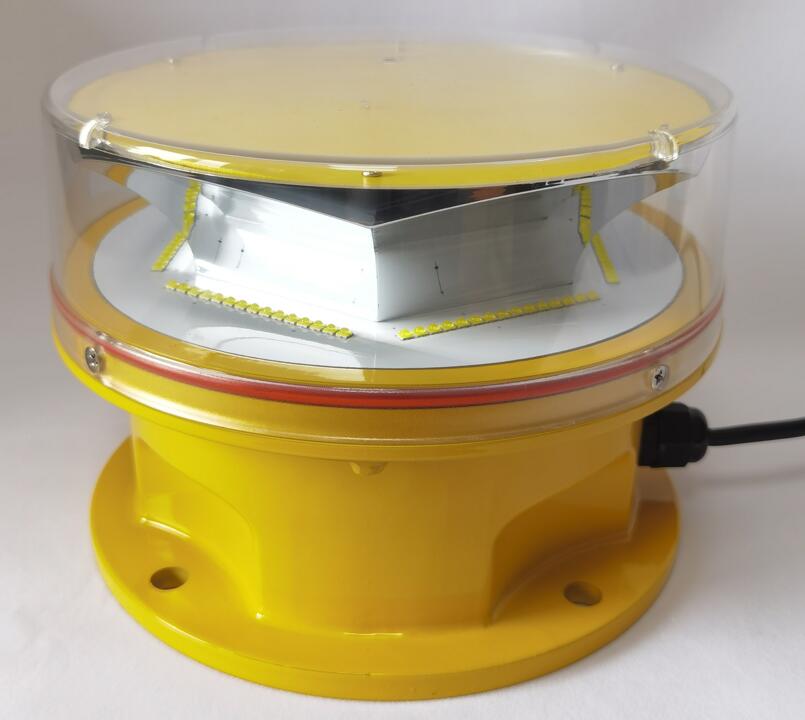Tower Aircraft Warning Lights: Essential Sentinels for Vertical Safety
In our era of soaring skylines and proliferating communication infrastructure, tower aircraft warning lights have become indispensable guardians of aerial safety. These specialized lighting systems serve as visual beacons that protect both towering structures and air traffic, preventing catastrophic collisions in increasingly crowded airspace. As structures grow taller and air traffic patterns more complex, the role of tower aircraft warning lights continues to evolve with advancing technology and stricter safety regulations.
This article examines the critical function, technological innovations, and best practices surrounding modern tower aircraft warning lights systems.

The Critical Role of Tower Lighting Systems
Tower aircraft warning lights address three fundamental aviation safety challenges:
Heightened Collision Risks - With over 200,000 registered tall structures in the US alone
| tower aircraft warning lights |
Expanding Urban Air Mobility - eVTOL operations requiring precise obstacle marking
24/7 Air Traffic Operations - Nighttime and low-visibility flight safety
Core Safety Functions:
Visual identification of structures day and night
Compliance with FAA/ICAO height-specific lighting requirements
| tower aircraft warning light |
All-weather reliability in extreme conditions
Distinctive flash patterns for immediate recognition
Technology Behind Modern Tower Lighting
Today's tower aircraft warning lights incorporate multiple technological advances:
Advanced Light Sources
High-intensity LEDs (50,000-100,000 hour lifespan)
Xenon strobes for maximum visibility
RGB-capable systems for multi-purpose signaling
Smart Control Systems
Automatic intensity adjustment (day/night/weather)
Wireless synchronization across multiple units
Remote monitoring and diagnostics
Durability Enhancements
Aircraft-grade aluminum housings
Corrosion-resistant coatings
-40°F to +160°F operational range
Regulatory Framework and Compliance
Tower aircraft warning lights must meet stringent international standards:
Key Regulations:
FAA AC 70/7460-1L (Obstruction Marking)
ICAO Annex 14 (Aerodromes)
EASA CS-ADR-DSN (Design Specs)
Certification Requirements:
Photometric performance testing
Environmental stress testing
Backup power system validation
Documentation of maintenance protocols
Specialized Applications
Different tower types require tailored lighting solutions:
Communication Towers
FAA-mandated red/white lighting schemes
Minimal interference with transmission equipment
High-wind resistance designs
Wind Turbines
Blade tip lighting synchronization
Ice-resistant housings
Radar-compatible systems
Urban Skyscrapers
Architectural integration requirements
Light pollution mitigation
Helicopter landing zone marking
Offshore Platforms
Saltwater corrosion protection
Marine navigation coordination
Hurricane-resistant mounting
Installation and Maintenance Best Practices
Proper implementation ensures optimal performance:
Installation Considerations
Height-specific lighting configurations
Obstruction-free light distribution
Lightning protection systems
Ease of maintenance access
Maintenance Protocols
Quarterly photometric verification
Lens cleaning schedules
Battery backup testing
Component corrosion inspection
Emerging Technologies
The next generation of tower aircraft warning lights will feature:
Intelligent Systems
Aircraft detection-activated lighting
Predictive failure analytics
Automated brightness regulation
Advanced Materials
Self-cleaning optical surfaces
Graphene-enhanced conductors
Impact-resistant composites
Sustainable Solutions
Solar-hybrid power options
Energy-harvesting designs
Recyclable component systems
Global Implementation Trends
Notable developments in tower lighting:
Asia-Pacific Growth
Rapid telecom tower expansion
Typhoon-resistant designs
Smart city integration
European Innovations
Light pollution reduction tech
Wind farm lighting networks
Historical structure adaptations
North American Standards
Strict FAA compliance
Hurricane zone specifications
UAM infrastructure preparation
Tower aircraft warning lights represent a critical intersection of aviation safety, structural engineering, and technological innovation. As our built environment continues its vertical expansion and airspace becomes increasingly congested, these systems will play an ever-more vital role in collision prevention.
The future of tower lighting lies in smarter, more sustainable systems that can adapt to evolving aviation needs while maintaining uncompromising reliability. From 5G towers to urban air mobility infrastructure, tower aircraft warning lights will remain essential sentinels - silent guardians that keep our skies safe one flash at a time. Their continued evolution will be crucial as we enter an era of denser air traffic and more complex aerial operations.
